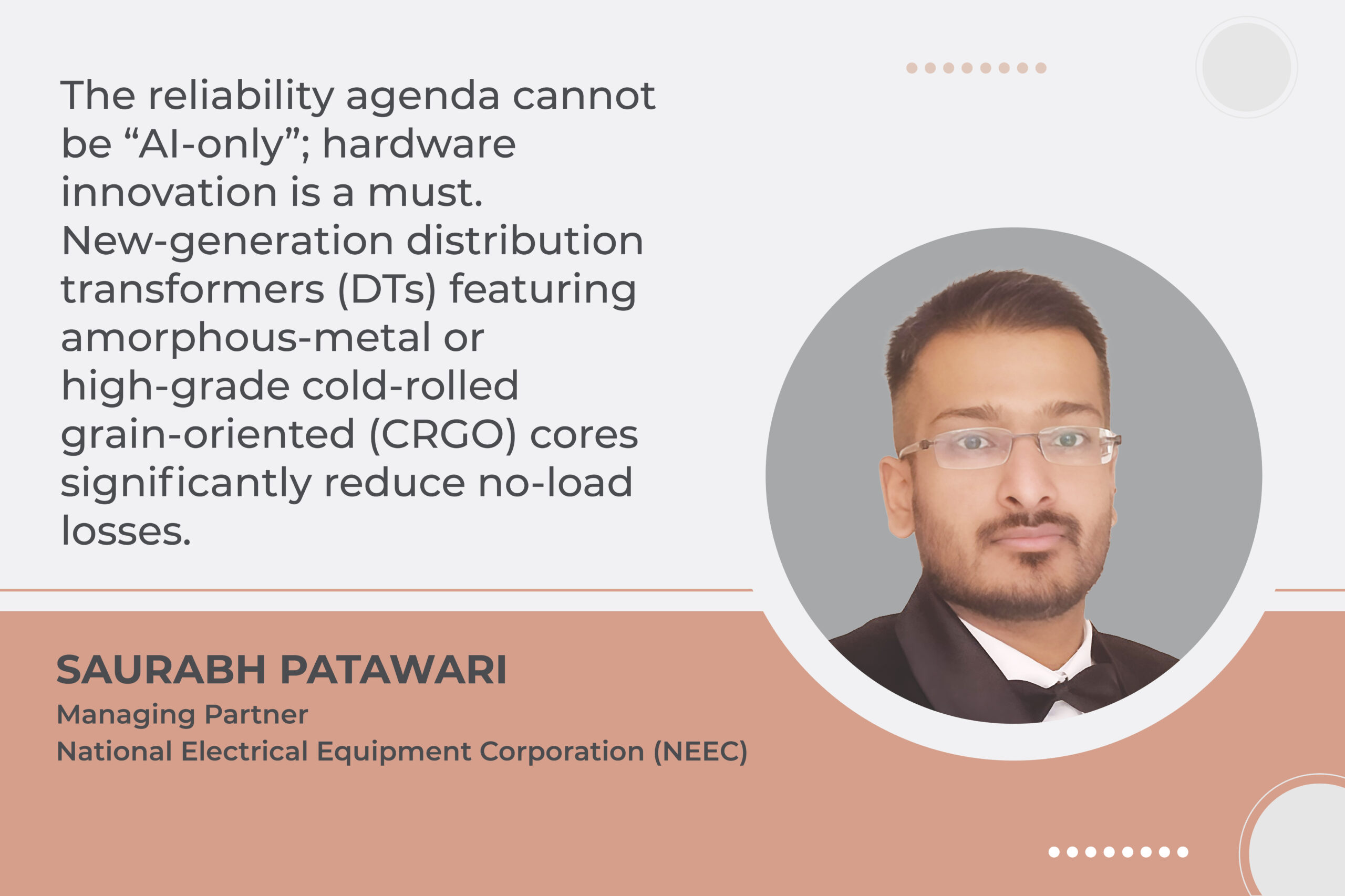The Indian grid is being stress-tested like never before
By Staff Report October 6, 2025 6:26 pm IST
By Staff Report October 6, 2025 6:26 pm IST

To keep the lights on, utilities must digitise the “last mile” of the grid, including feeders, distribution transformers, and meters, and pair them with AI that can forecast, identify, and resolve problems before they escalate.
The Indian grid is being stress-tested like never before. Peaks near 190 GW in 2021 increased to 250 GW in May 2024, reaching 231 GW in May 2025 due to cooler weather, a reminder that demand volatility, not just growth, is the new planning constraint. Keeping the lights on depends on how quickly utilities digitise the “last mile” of the grid, including feeders, distribution transformers, and meters, and pair them with AI that can forecast, identify, and resolve problems before they cascade.
India has made significant investments in this direction. Under the Revamped Distribution Sector Scheme (RDSS), states have sanctioned more than 203 million (20.33 crore) smart meters, with 24.1 million (2.41 crore) installed as of mid-July 2025. Beyond consumer meters, RDSS also mandates smart metering of feeders and distribution transformers (DTs). These telemetry layers give utilities the high-frequency data that machine-learning models need to predict technical losses, detect tampering, localise outages, and automate restoration. Early rollouts are showing momentum from Nagaland to Gujarat, and the policy signal will be driven by data reliability and financial turnarounds.
Urgency at the transformer level
Distribution transformers are the grid’s Achilles’ heel. Failure rates hovering in double digits in parts of the country translate into more than a million units failing annually, which are costly to repair, disruptive for consumers, and reputationally damaging for DISCOMs. A modern approach to instruments DTs with temperature, dissolved-gas, load, and harmonics sensors, computes a Transformer Health Index (THI), and allows AI to flag incipient faults from thermal hotspots to insulation distress days or weeks earlier than legacy patrols. It prioritises maintenance, then targets 5–10 per cent of assets, driving 60–70 per cent of risk reduction, while cutting truck rolls and unplanned outages.
There is also a “self-healing” layer emerging. When storms topple poles, smart meters and DT monitors generate real-time alarms; AI in the distribution control room correlates these with feeder currents and weather feeds to isolate faults, reroute power, and dispatch crews. Regulators and state governments are encouraging DISCOMs to utilise AI/ML for demand forecasting and outage management, taking practical steps to improve SAIDI/SAIFI scores without waiting for long-cycle capital expenditures. Recent directions to Delhi’s utilities to leverage AI/ML ahead of record summer peaks exemplify this shift from reactive to predictive operations.
Indian utilities are utilising digital twins that combine GIS, real-time SCADA, and weather models with AI to optimise switching, balance renewable energy sources, and visualise asset stress. These twins test “what-if” scenarios: Will DT breach the nameplate under a 45°C heatwave and evening EV surge? Which feeder should get an on-load tap changer or capacitor bank to hold voltages within ±6%? And AI-assisted dispatch that utilises 15-minute forecasts to minimise transformer overloading and neutral-current imbalances – small, continuous corrections that add up to fewer trips and fewer complaints.
Prepaid smart metersData at the edge is transformative. With prepaid smart meters, AI can segment consumers by load shape and payment behaviour, enabling targeted loss reduction and improved collection efficiency, which are core goals of RDSS. State programmes rolling out smart prepaid meters report that granular interval data helps utilities narrow technical loss pockets to specific segments of a feeder instead of swapping entire cable runs “just in case”. And because prepaid balances and remote connect/disconnect are digital, collections improve without field friction.
The reliability agenda cannot be “AI-only”; hardware innovation is a must. New-generation distribution transformers (DTs) featuring amorphous-metal or high-grade cold-rolled grain-oriented (CRGO) cores significantly reduce no-load losses. Enhanced cooling geometries and effective moisture-control practices contribute to slowing down the ageing of insulation. Additionally, built-in bushing sensors, partial-discharge monitors, and arc-flash detection systems enhance the intrinsic safety of these devices.
When these physical upgrades are paired with condition-based maintenance, a DGA spike automatically opens a work order and schedules a crew before failure. As a result, the payoff is immediate, with fewer emergency replacements, lower inventory carrying costs, and tighter voltage profiles during peak periods.
***************************
Authored by:
Saurabh Patawari, Managing Partner – National Electrical Equipment Corporation (NEEC)
We use cookies to personalize your experience. By continuing to visit this website you agree to our Terms & Conditions, Privacy Policy and Cookie Policy.